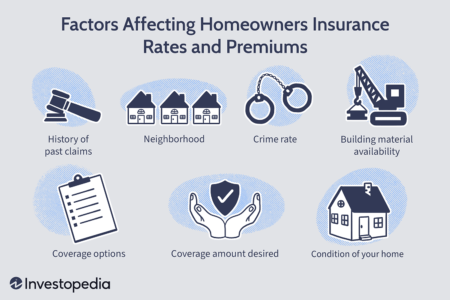When selecting a home insurance policy, understanding coverage limits is essential to ensure that your home and belongings are adequately protected. Coverage limits dictate the maximum amount your insurance company will pay for a covered loss. Grasping how these limits work can help you make informed decisions and avoid unexpected financial burdens. Here’s a detailed look at coverage limits in home insurance policies.
What Are Coverage Limits?
Coverage limits are the maximum amounts an insurance policy will pay for specific types of losses. These limits are set when you purchase the policy and vary depending on the coverage type. Understanding these limits ensures that you have sufficient protection against potential risks.
Types of Coverage Limits
- Dwelling Coverage Limit
- Definition: This is the maximum amount your insurance will pay to repair or rebuild your home if it’s damaged or destroyed by a covered peril, such as fire, storm, or vandalism.
- Importance: It should reflect the current replacement cost of your home, not its market value. Underestimating can leave you with insufficient funds to rebuild, while overestimating might lead to higher premiums.
- Personal Property Coverage Limit
- Definition: This covers the loss or damage of your personal belongings, such as furniture, electronics, and clothing, due to covered perils.
- Importance: Ensure the limit is adequate to replace your possessions. High-value items like jewelry, art, or electronics may require additional coverage through endorsements or riders.
- Liability Coverage Limit
- Definition: This protects you against claims resulting from injuries and property damage caused to others. It includes legal fees and medical expenses.
- Importance: Adequate liability coverage is crucial to protect your assets in case of lawsuits. Consider higher limits if you have significant assets or engage in activities that increase your liability risk.
- Additional Living Expenses (ALE) Limit
- Definition: ALE covers the cost of temporary living arrangements if your home is uninhabitable due to a covered loss.
- Importance: This limit should cover expenses like hotel bills, restaurant meals, and other necessary costs during the displacement period.
How to Determine Appropriate Coverage Limits
- Home Replacement Cost: Calculate the cost to rebuild your home from scratch, considering current construction costs and materials. Avoid basing it on the market value, which includes land and other factors.
- Inventory Your Belongings: Make a detailed list of your personal property, including high-value items. Estimate the total value and ensure your personal property coverage limit can accommodate it.
- Assess Liability Risks: Consider your lifestyle, assets, and potential liability risks. Higher liability limits provide better protection against lawsuits and claims.
- Factor in Living Expenses: Estimate the potential cost of living elsewhere temporarily and set a realistic ALE limit to cover these expenses comfortably.
Reviewing and Updating Coverage Limits
Life changes such as home renovations, purchasing valuable items, or expanding your family can impact your insurance needs. Regularly review and update your coverage limits to reflect these changes. Annual reviews with your insurance agent can ensure your policy remains adequate and up-to-date.
Consequences of Inadequate Coverage Limits
Having insufficient coverage limits can lead to significant financial strain in the event of a loss. You may have to pay out-of-pocket to cover the gap between your coverage and the actual cost of repairs or replacements. Additionally, inadequate liability coverage can jeopardize your financial security if you’re sued.
Conclusion
Understanding and setting appropriate coverage limits in your home insurance policy is fundamental to ensuring comprehensive protection for your home and belongings. By accurately assessing your needs and regularly reviewing your policy, you can safeguard against potential losses and maintain peace of mind. For more information and to explore various home insurance options, visit Home Insure and check out their extensive home insurance resources.







